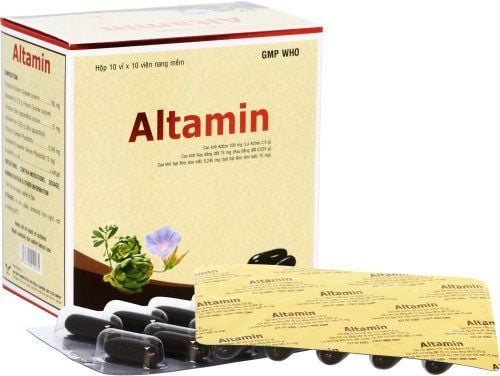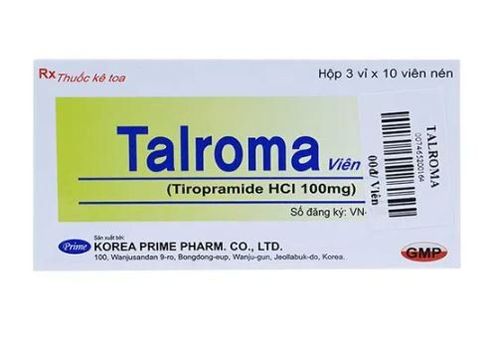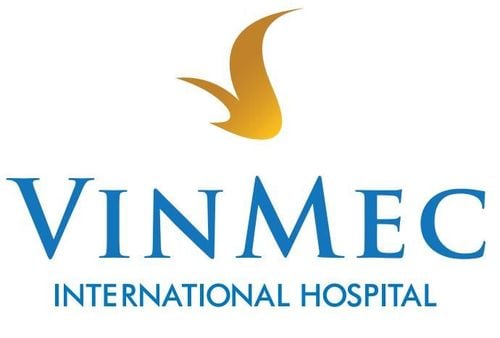This is an automatically translated article.
People with liver cancer may initially have no symptoms, especially when the tumor is found early on screening. Other patients may experience vague signs of liver cancer such as fatigue, nausea or abdominal pain.1. Liver cancer overview
The liver is the largest internal organ, located under the ribs and right lung. The microscopic structure of the liver is made up mainly of hepatocytes and performs many important functions such as protein synthesis, including most coagulation factors, bile secretion involved in digestion, store energy, metabolize substances and eliminate toxins.
Liver cancer is a malignancy that begins in the liver when cells in the body grow out of control. Depending on the nature of the tumor, the stage division and the extent to which it affects nearby organs, it is important that the patient's condition or comorbidities, each situation will be decided on a treatment regimen and have different prognosis.

Đau bụng là một trong các dấu hiệu ung thư gan
2. Signs of liver cancer
The majority of patients are diagnosed with liver cancer but have no obvious symptoms. In fact, this pathology is often discovered incidentally during abdominal ultrasound, CT or MRI for other conditions. As the disease progresses, it will cause common signs of liver cancer such as:
Right side abdominal pain: The liver itself has no nerve tissue, but a thin layer of liver covering called a Glisson cyst contains a lot of nerve fibers. . Abdominal pain is one of the signs of liver cancer that originates from the muscle tension of this nerve fiber. Therefore, when a liver tumor enlarges and then exerts pressure or strain on the Glisson capsule, abdominal pain occurs. Abdominal mass or lump: Malignant liver tumor or liver cancer can be very large at the time of diagnosis, palpable on the abdominal wall, especially when lying on the back. Therefore, the physical examination of patients with signs of liver cancer should be very thorough by a liver surgeon. This is an important part of the initial evaluation of patients with liver cancer. However, obese patients may obscure this finding. Right shoulder pain: This liver cancer sign is often complained by patients whose tumor pushes into the right diaphragm. The hepatic veins carry pain impulses from the diaphragm to the right shoulder. Therefore, anything that irritates the right diaphragm can cause shoulder pain, such as infection of the lower diaphragm, inflammation, abscesses, trauma, and liver tumors. Jaundice: Jaundice, sometimes with yellow eyes and dark urine, is caused by elevated levels of bilirubin in the blood. Liver cancer can cause jaundice through a number of different mechanisms. When large liver cancer is located near the common bile duct, there may be external compression or direct invasion of the bile duct. The flow of bile is then mechanically interrupted, causing jaundice. Endoscopic biliary stenting can temporarily resolve jaundice and stabilize bilirubin levels. Another possible cause of liver cancer causing jaundice is tumor invasion and spread into normal liver parenchyma. This is called liver replacement by tumor, which leads to end-stage liver failure. Itchy skin: When the bile ducts are blocked, bile acids produced by the liver will spill into the blood circulation, causing itchy skin all over the body. In some patients, the itching of the skin is too severe and does not respond to any medications. Scratches on the skin are usually obvious due to this symptom. Unintentional weight loss: Similar to other cancers, liver cancer also leads to unintentional weight loss. Tumor cells produce enzymes that cause anorexia, a metallic taste in the mouth, and general weakness. Compression: When liver cancer grows to a significant size, the tumor begins to put pressure or pressure on surrounding organs in the abdominal cavity. For example, left lobe liver cancer often pushes into the stomach causing nausea, bloating, early satiety, reflux symptoms, and upper abdominal discomfort. Shortness of breath: Liver cancer can make breathing difficult by restricting the movement of the diaphragm when it reaches a large size. Hepatocellular carcinoma located in the right lobe can also irritate the diaphragm by causing local inflammation/irritation and consequent sympathetic pleural effusion. If the volume is large, it may compress the lung parenchyma, making it difficult for the patient to breathe. Ambiguous fatigue: Similar to the sign of liver cancer that causes unintentional weight loss, the patient may be tired, irritable and unable to function as usual. This may be because cachexin, a protein made by cancer cells, disrupts the body's overall cellular function. Fever: Liver cancer can cause bile duct obstruction and stagnation of flow. This condition can facilitate an infection, known as cholangitis. One of the symptoms of cholangitis is a high fever, which can be accompanied by chills and malaise. This condition can lead to very serious events, because of the risk of death.

Ngứa da là một trong các dấu hiệu ung thư gan
In short, if you detect signs of liver cancer, you should see a specialist as soon as possible to confirm the diagnosis. If liver cancer is diagnosed at an early stage, minimally invasive robotic hepatectomy improves prognosis significantly. Therefore, planning regular checkups and implementing screening measures for liver cancer, especially for high-risk subjects, will ensure long-term general health.
Currently, Vinmec has become a prestigious address in liver cancer screening with:
Team of highly qualified and experienced doctors; Comprehensive professional cooperation with domestic and international hospitals: Singapore, Japan, USA,...; Comprehensive treatment and care of patients, multi-specialty coordination towards individualizing each patient; Having a full range of specialized facilities for diagnosis and staging before treatment: Endoscopy, CT scan, PET-CT scan, MRI, histopathological diagnosis, gene-cell testing, .. .; There are a full range of mainstream cancer treatment methods: surgery, radiation therapy, chemotherapy, stem cell transplant...
Please dial HOTLINE for more information or register for an appointment HERE. Download MyVinmec app to make appointments faster and to manage your bookings easily.
Reference sources: cancer.org, cancer.net, medicinenet.com, careplusvn.com












